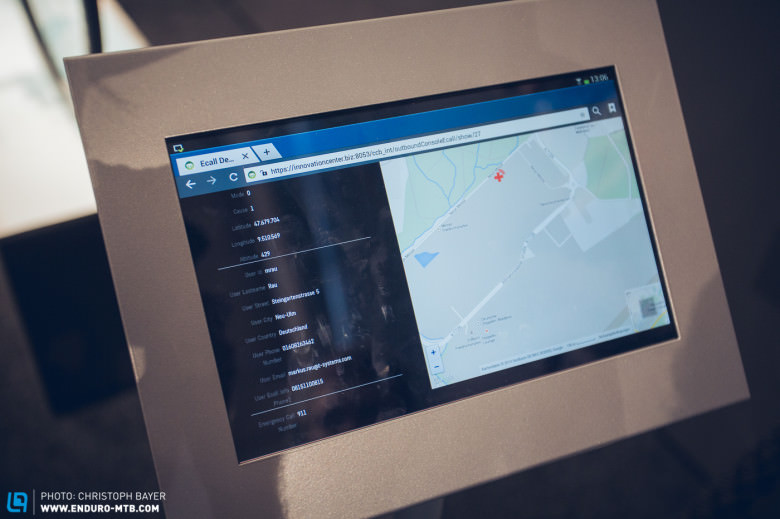Looking ahead: Is this the future? Canyon reveal new project bike

It has become a Eurobike tradition for Canyon to present a project bike with futuristic design and new technology. The guys from Koblenz have only recently introduced the Shape-Shifter technology, as well as the STRIVE CF. But the surprises were not over yet, Canyon presented us with the MRSC Connected Project: a fully suspended bike, which has nothing to do with Enduro at first sight.

The development of an active chassis allows manufacturers to significantly enhance a bike’s comfort and handling.
At the very core of this project is an innovative carbon leaf spring suspension system using newly-developed MR (magneto-rheological) fluid bearings connected to a series of sensors and the central processing “On-Board Unit”. The system is called “Magneto-Rheological Suspension Control,” or in more simple terms, MRSC.
The active and intelligent chassis
While competitive road bike design previously focused on creating the best mix of lightness and stiffness possible, these days we are witnessing more emphasis on aerodynamic optimisation combined with these traditional parameters. A case in point for this is the new Aeroad CF SLX.
Another significant factor to consider in the pursuit of the perfect race bike is comfort. The proven VCLS Technology has for years stood as testament of the commitment to this area.



Electronic shifting and power measurement are now commonplace at the high end of performance road cycling. GPS cycling computers have all but replaced simple speedometers. We are now able to navigate and collect performance data when on the bike and then share it with others by uploading our rides onto social networks afterwards. Technology is constantly changing the way we approach cycling.
Canyon wanted to look beyond existing technology to imagine what a “connected” bike would be capable of in the future. What opportunities are opened up with the introduction of more electronics? What if the bike were able to communicate with the rider? This may all sound a long way off, but Canyon’s intelligent “On-Board Unit”, developed together with Deutsche Telekom, proves it’s actually not that far away..
Service
Just like cars, regular maintenance and service of bikes is crucial in order to maintain safety and performance. This often involves the replacement of moving or worn-out parts such as brake pads, chains and gear cables. Canyon’s On-Board Unit is able to recognise when these parts need replacing and also keeps track of service intervals for the rider.



E-Call (Notruf)
When an accident occurs, seconds can be crucial. Especially when one is riding on one’s own, it can be problematic to call for help. The E-call function automatically detects a heavy fall an calls for an ambulance while sending the location. This helps to provide fast help.
Tracking
The GPS module integrated into the frame is able to record the bike’s location allowing you to collect training and performance data without the need of an additional GPS device. Another advantage is that the bike can be tracked if stolen.

The extensions of these functions are almost infinite. The Canyon Project MRSC shows an interesting view into the future. Intelligent bikes will make biking more secure and fun. At the same time they offer various service functions, as well as the integration of further features.
We are curious about the future and can’t wait to see these features in serial mountain bikes. One has to remain open-minded for new technologies and should see the opportunities, as well as the benefits of these.
More information: www.canyon.com
Text & Photos: Christoph Bayer
Did you enjoy this article? If so, we would be stoked if you decide to support us with a monthly contribution. By becoming a supporter of ENDURO, you will help secure a sustainable future for high-quality mountain bike journalism. Click here to learn more.








